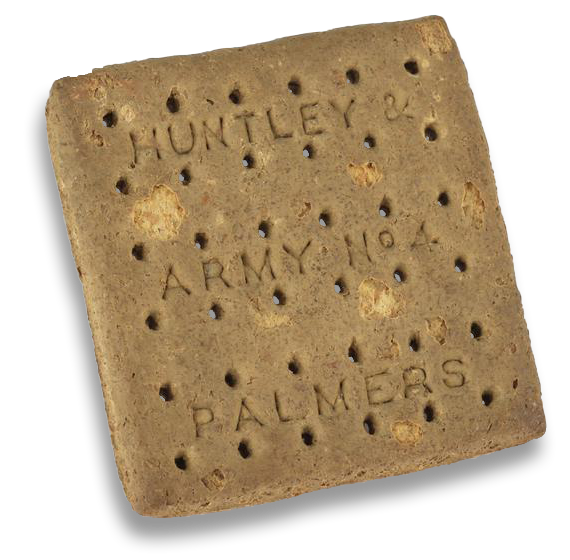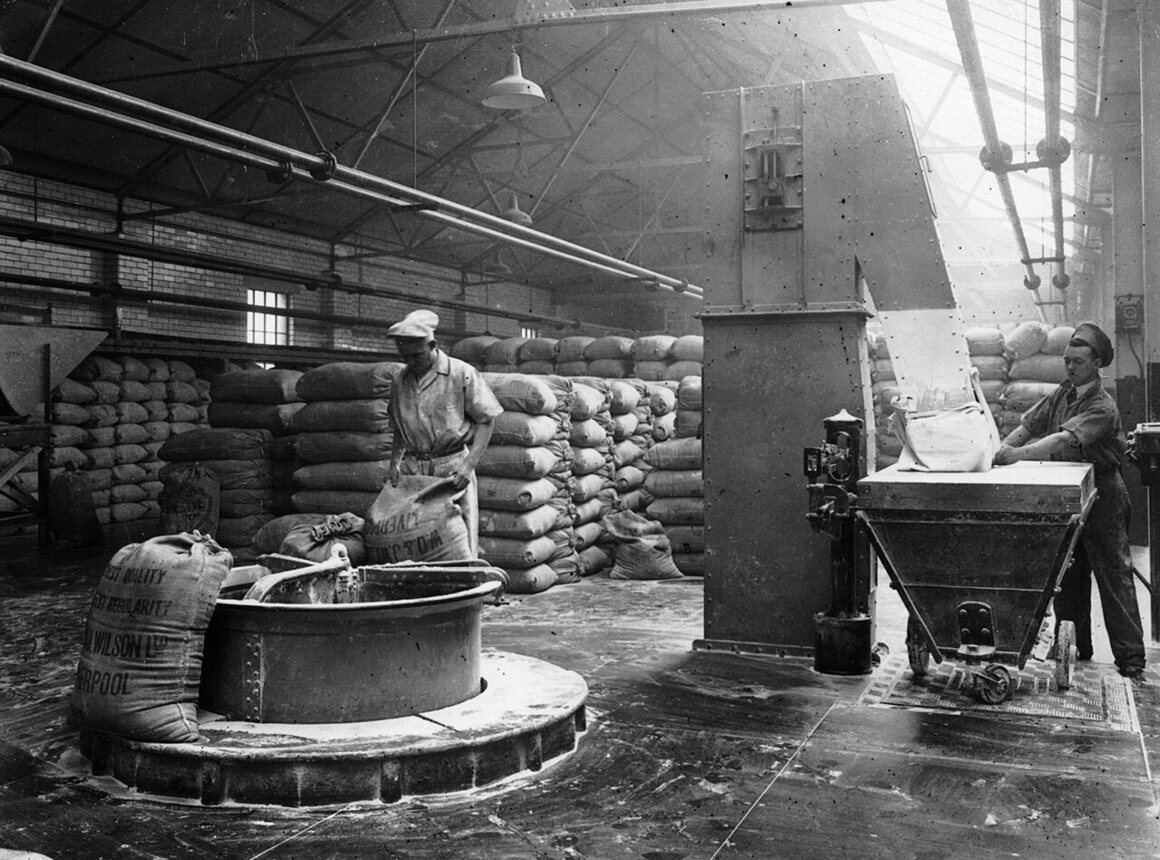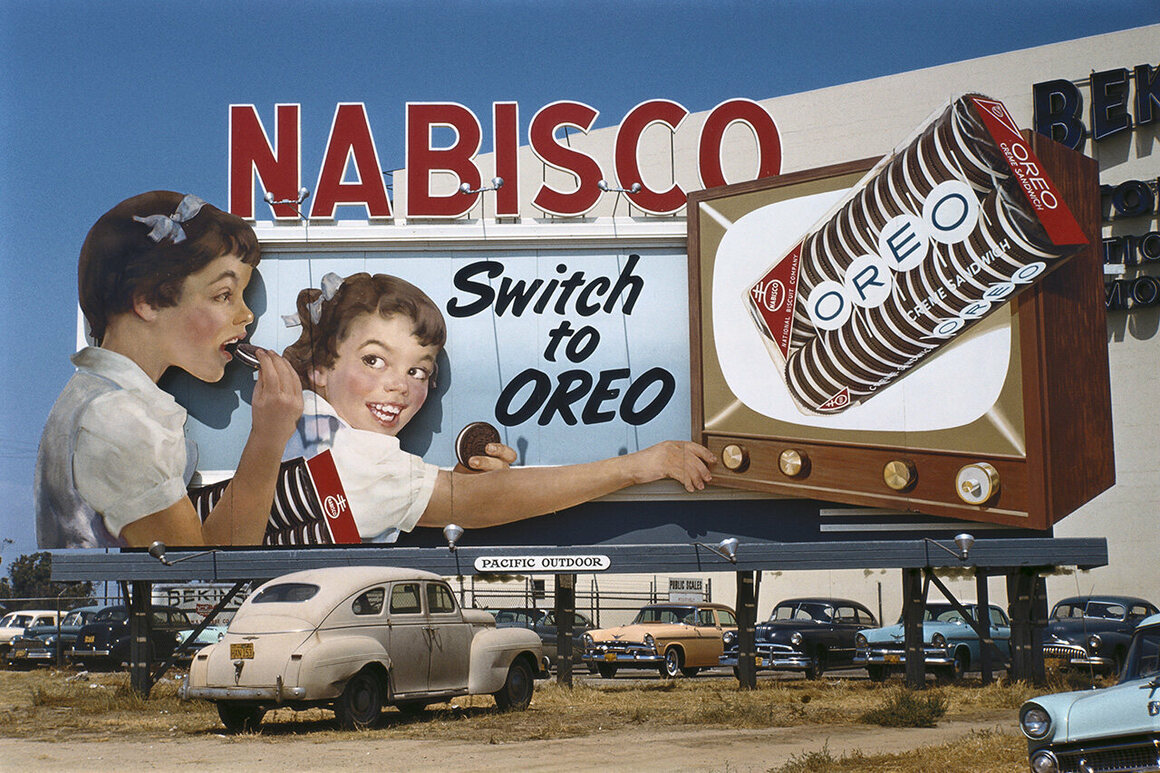So What Is a British Biscuit Really?
Food is never simple. Take what is known as a cookie in America and a biscuit in the United Kingdom—two small, usually sweet treat concepts that sometimes overlap and sometimes don’t. However humble, these foods are inextricably tied to gigantic ideas in the history of both countries: the expansion of empire, the Industrial Revolution, waves of immigration, slavery, labor, nationalism. It’s honestly not that insane to say that the cookie/biscuit, if you include its predecessors, is one of the most important foods in human history.
The forebears of the cookie/biscuit are some of the earliest prepared foods in the world. At its core, this is a paste of some sort of flour and some sort of liquid, spread fairly flat and cooked until it dries. Essentially every culture had some version of this, made with whatever flour they could grow and process. Such items were portable, long-lasting sources of calories. Ground millet, sorghum, peas, and, eventually, wheat have been used for these hard, flat crackers, which were then rehydrated when it came time to eat. Usually, they were baked twice: once to cook them, at a relatively high heat, and then again for longer at lower heat to fully dry them out. Probably the earliest example is bappir, a Sumerian bread that dates back to around the third millennium B.C., and which was made of barley and wheat. Interestingly, it wasn’t actually eaten, but used as a sort of shelf-stable beer starter. That would change, though.
Then there’s baati, from northern India, which is a hard, round, unleavened biscuit, likely very ancient, commonly served with lentils. Greek shepherds soaked their paximadia, made of barley, in water and olive oil. It’s clear that this kind of foodstuff has a near-universal and very old history. That said, recipes and even helpful descriptions of early biscuits are hard to find. This was the food of the poor, generally, and for most of recorded history, those who wrote had little interest in documenting anything to do with the poor. “The early history of biscuits is largely unwritten,” says Annie Gray, a British food historian. “We know they’re there, we know people must have been eating them, but we don’t actually know what they were made of, or how they were used, or whether they were being baked at home or bought from bakers.”

This sort of food quickly became associated with the military, as the original MREs. Soldiers could carry biscuits for long periods of time, and either eat them as-is (not very pleasant) or soften them in water or whatever soups, wines, beers, or other liquid they had around. Biscuits like these aren’t especially nutritious when made from wheat, but they are filling and contain calories, and their virtue lay more in stability than anything else.
In English these biscuits eventually became known as “hardtack” when used in a military or exploration setting. But the more common name in many European countries was derived from the Latin bis coctus, or “twice-baked.” That’s where we get both “biscuit” and “biscotti.” The name, it turns out, is more figurative than it sounds: British military hardtack was baked four times, and modern British biscuits are only baked once.
There’s a parallel evolution of the biscuit starting sometime before the seventh century. Sugar processing, developed first in India, from sugarcane, quickly made its way to the Abbasid Caliphate, which would eventually be centered in Baghdad. It was then, in what’s sometimes called the Golden Age of Islam, that biscuits would first be sweetened with sugar. And it made all the difference.

There were plenty of sweeteners around the world before sugar. In continental Europe and England, the preferred sweetener was honey, and that did not lend itself to biscuits. “Honey is hygroscopic, which means that a dough sweetened with it attracts water,” writes Lizzie Collingham in her excellent book, The Biscuit: The History of a Very British Indulgence. “Thus biscuits sweetened with honey quickly become soft, defeating the object of making them in the first place.” So in England, biscuits remained plain and unsweetened, made of wheat in the south and oats in the north, for centuries. Meanwhile over in Baghdad, sugar was being used in all kinds of foods. The sweet biscuits were often shaped like rings, just like military ones, which were easy to string together and carry on long journeys.
Sugar slowly leaked westward into Europe, and there are records of it in small amounts—for the very wealthy—in the Medieval period. It wasn’t until 1641 that the English finally figured out a way to get lots of it to their country. That’s when the English established sugarcane plantations in Barbados, which had a similar climate to the South Pacific, where it was first domesticated. From these plantations, worked by enslaved people, sugar finally flowed into England. The island long played a prominent role in the slave trade.
Prior to that, biscuits in England were still common as an economical, long-lasting food for the poor, though no real recipes for civilian biscuits from this era exist. Gray says that they were likely the predecessors of what we now know as water crackers or water biscuits. Military hardtack, meanwhile, had evolved into one of the most hated foodstuffs in the British Empire, and for good reason.

The British hardtack industry was woefully behind that of other European powers. Spain and Portugal both had sophisticated biscuit bakery infrastructures for their navies and explorers, contracting with private bakers and providing them to explorers and traders. England was a few decades late to the world-spanning maritime travel than the Spanish and Portuguese, and their biscuits couldn’t have helped matters.
In England, corners were cut whenever possible. One of the most famous examples is in the nickname “limey,” which comes from the fact that the English navy eventually swapped the standard scurvy treatment, lemons, for the less expensive limes, which were grown in the British colonies. (Limes, it turns out, have significantly less vitamin C than lemons, and scurvy quickly became a problem again.) This frugality extended to biscuits. The flour was the lowest possible quality at best, and accusations flew that it was adulterated with chalk and even less savory, non-food materials. English hardtack became notorious for softening on voyages, whereupon weevil maggots would crawl out. By the mid-1700s, British biscuits were shitty enough that it was becoming a legitimate problem of national security. Sailors were weak and dying because their main food was spoiling. Soft biscuits became indelibly tied with weevils, death, and unclean conditions.
By the time the British started fighting Napoleon, the navy had cracked down and created massive biscuit-making factories with the benefit of new steam technology. They were, writes Collingham, one of the first industrially produced products in the world.

While the military was figuring out how to make hardtack in non-disgusting ways, other huge changes were happening in England. Tea was making inroads in the 1660s, along with a civil war, the beheading of the king, a plague, and repeated wars with the Dutch. Moving into the 1700s, the first sparks of the Industrial Revolution began siphoning workers from the fields to the factories. Perhaps more importantly to this discussion, the actual time of day workers ate began to change. Prior to this time, the largest meal of the day in England was around noon or a little later, at the midway point of the workday. But then, with workers farther away from home and with the availability of sunlight less important to work, this meal moved later and later, eventually settling in at around 6:00 p.m., when workers could have a real home-cooked meal. The upper classes, too, had less work than ever to do, and more nighttime entertainment in the rapidly growing cities, so they ate much later as well.
But there was a problem: Lunch hadn’t been invented yet. This is where tea comes into play, and with it, the biscuit. Tea and biscuits were an early pairing for the working classes. A biscuit, as it has always been, is a good source of cheap, reliable fuel. Mid-day tea became common, until it, too, moved later into the afternoon, pushed by the actual meal that became lunch. This is also the great era of nationalism, when polities around the world decided they should be countries with proper borders and a shared language and a ruler and flag, rather than some kind of loose cultural and geographic blob under a king. Tea, which couldn’t have been any less English, given where it actually grows (with India and China topping the list), became a major national symbol. It was almost a boast of the power of the Empire, to make your national drink something that is grown thousands of miles away. And the biscuit was always there, tea’s partner.
From this point the British biscuit evolves from something purely utilitarian into something more and more luxurious, with more sugar, cut in increasingly delicate and intricate ways, flavored with chocolate and spices. Biscuit companies then were almost like tech companies now: They’d announce a new biscuit, which was rarely all that different from an older biscuit, and market it aggressively. They competed mercilessly for market share. Britain had transitioned from having the world’s worst biscuits to having its best (at least by British standards).
In the United States, things were … different. By the time the country had a big, far-flung empire of its own, there were better solutions to the problem of spoilage-free naval food than biscuits, namely stuff in cans. (Though military MREs do often contain a cracker of some sort, even today.) Even the word “biscuit,” which in the United Kingdom is applied to any hard, thin, bread-like product, was gone, thanks to the American penchant for studiously throwing Britishisms in the garbage.

Hardtack was still common in the American military and fishing realms. In New England, it was sometimes called “sea biscuit” or “pilot bread,” and it was there that a slightly better version of hardtack was created. A baker in Newburyport, Massachusetts, named John Pearson created a thinner biscuit named the Crown Pilot cracker. This was the first major American cracker. It was like a hardtack biscuit, but thinner and more delicate, while still keeping a long life. Pearson’s bakery would be swallowed up by a new conglomeration of independent bakeries. By 1898 it was called the National Biscuit Company, later abbreviated to Nabisco.
The term “cookie” comes from a totally different root, both culinarily and etymologically, than the British biscuit. It’s not really accurate to say that “biscuit” is the British word for “cookie” or vice versa, as there are multiple different ancestries at play here. The word “cookie” comes from the Dutch koek, meaning “cake.” Dutch also has a diminutive: koekje, or “little cake.” With the major influence of the Dutch in New Amsterdam, it was the Dutch word that was Americanized into “cookie.”
American cookies vary pretty dramatically. An Oreo is crisp and sandwiched, while a Toll House–style chocolate chip cookie is gooey and soft. American cookie culture evolved quickly thanks to new technology: electric mixers, widely available leavening agents, easy access to formerly expensive spices and add-ins like chocolate.

One major difference, though, is that Americans didn’t have a long and sometimes maggot-infested history with biscuits. By the time America was America, the biscuit was already established as a treat rather than a survival tool. Hardtack has a history in the United States, too, especially around the Civil War. But it was never really connected with sweet treats by evolution or happenstance, unlike in Britain. The new cookie tradition was simply dessert.
We should probably mention the American biscuit here, which is usually associated with the American Southeast. It’s totally unlike either a cookie or a British biscuit, being instead a soft quick bread. Quick breads, which include Irish soda bread and cornbread, are yeast-less breads that use a leavening agent such as baking powder. They arose due to the high price of yeast. How the term “biscuit” became applied to a soft quick bread that is only ever baked once—that’s a mystery. Somehow the word for one bread product eventually became applied to another, despite them having little in common.
Back to cookies! If there’s a thing to distinguish the American cookie from the British biscuit, it’s the idea that a biscuit always needs to be crisp. This comes from the hardtack tradition, where if a biscuit was soft, it had gone bad. This remains true today; as an American watching The Great British Bake-Off (The Great British Baking Show in America, for some reason), judge Paul Hollywood’s obsession with a biscuit’s “snap” seems weirdly fussy. From an American perspective, some cookies snap and some don’t, but that certainly can’t be applied as a general rule. “I don’t disagree with him that a biscuit should snap,” says Gray. “A soggy biscuit is a stale biscuit; if it’s gone a bit soft, you know it’s not fresh. So I think there are a lot of cues about goodness and freshness with the snap.” That’s hardly a standard that makes any sense with an oatmeal raisin cookie. Some cookies are crisp, because that’s nice. Some are gooey, because that’s nice, too.





